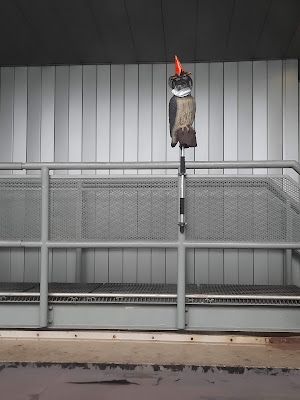Charlie Brown’s Saddest Tree
"Out in the forest stood such a charming fir tree. It was in a good spot where it could get sunshine and there was plenty of air. All around grew scores of bigger companions, both firs and pines, but the little fir tree was so eager to grow up that it didn’t think about the warm sun or the fresh air."
“The Fir Tree” by Hans Christian Andersen, first published in 1845
**********
Dear Alex,
My earliest books for learning English were fairy tales by the Grimm brothers and Hans Christian Andersen. I read and tread on these pages as gospel, shuddering over blades and curses befalling the rogue, shuddering more as an addict for prince and palace. All I want for Christmas is a happy fairy-tale ending.
The year is not ending rather happily. More Americans have died from the pandemic than in World War I. In ambivalence many more are dying, their offices and campuses turning into hot spots of altruistic fatigue. Our woes and itches have gone off-chart.
When the most famous Rockefeller Christmas Tree was hoisted in Manhattan earlier this week, public tweeting on its scraggly form went viral:
“Could the Rockefeller Center Christmas Tree look any worse?”
“Charlie Brown: I have the saddest Christmas Tree. Rockefeller Center: Hold my beer.”
In a responsive tease, the Rockefeller Center tweeted:
“Wow, you all must look great right after a two-day drive, huh? Just wait until I get my lights on December 2!” 😉
Just wait? For what?
On the day after this tweet, headlines fluttered over the “miracle” and “metaphor” of 2020: the discovery of a saw-whet owl at the base of the 75-foot Norway spruce at the Rockefeller. The smallest of his kind in northeastern woodland, he was rescued by a workman unraveling the boughs and aptly named Rockefeller.
But the real hoot of the Manhattan miracle first echoed among the workmen at the muddy construction site of the Rockefeller Center being built in the Depression-era of 1931. The stock market had recently crashed in spin with national mania. There were no extra cups or copper to spare. At the rising Rockefeller, the laborers were realists who decided to indulge in dream-making. They pooled their pennies to purchase hope: a small Christmas tree for the virgin landmark. Then they adorned it with tin cans, paper reams and cranberries.
The freedom to hope looks like the workmen’s hands on the small fir and smells like the erupted ground. And learning to hope, then and in this instance, would be our hooting miracle on every Merry Christmas.
Yours, Kate



Comments
Post a Comment